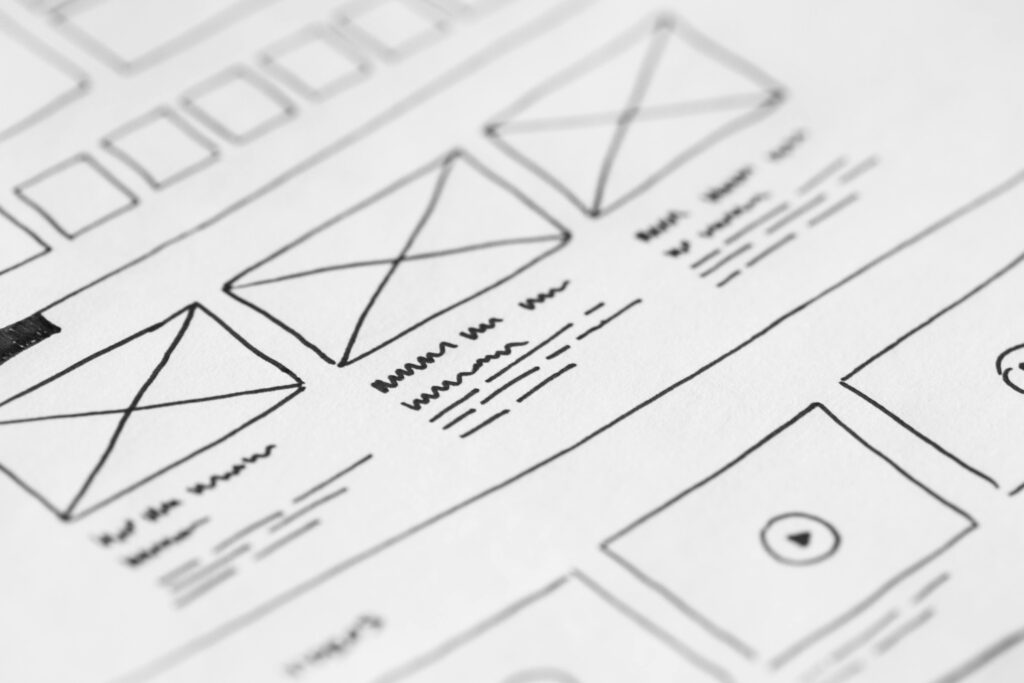When most people think of user experience (UX), they think of sleek designs, intuitive layouts, or eye-catching websites. But UX goes far beyond aesthetics—it’s a critical driver of real, measurable business success.
At one x, we’ve seen first-hand how investing in UX design transforms brands, boosts conversion rates, and fuels long-term growth.
Let’s explore how UX impacts business performance, the metrics that matter, and how your company can start making user experience a key part of your strategy.
What is User Experience (UX), Really?
User experience (UX) refers to the overall interaction a user has with your product, service, or brand. It includes everything from how easy it is to navigate your website to how quickly a customer can find the information they need or complete a purchase.
In short, It is the difference between a customer who clicks away in frustration and one who converts—and keeps coming back.
Related: Mastering Customer Experience: Proven Strategies that Drive Loyalty & Growth
Why UX is More Than Just Design
While UX design often involves visual elements, it’s not just about making things look good. Great user experience is about function, flow, and feeling.
Here’s what effective UX really encompasses:
- Ease of use: Can users complete key actions without confusion?
- Speed and efficiency: How fast can they find what they need?
- Accessibility: Is your experience inclusive for all users?
- Emotional response: Does your site or app feel trustworthy and professional?
It’s a blend of psychology, design, and technology—all aimed at delivering value to your users while achieving your business goals.
The Real Impact of UX on Business Growth

So how does UX design actually affect your bottom line? Here’s how:
1. Increased Conversion Rates
A seamless user experience can significantly boost conversion rates. Whether it’s filling out a form, completing a sale, or booking a service, good UX guides users effortlessly to take action.
For example, a study by Forrester found that a well-designed user interface could raise your website’s conversion rate by up to 200%, while better UX design could yield conversion rates up to 400%.
At One X, we’ve helped clients across Australia increase lead conversions by identifying friction points and refining the customer journey.
2. Lower Customer Acquisition Costs
When users convert more efficiently, your cost per acquisition drops. That means more value from your paid ad spend, SEO efforts, and other digital marketing channels.
Instead of spending more to drive traffic, you make the most of every visitor.
3. Higher Customer Retention
Great UX isn’t just about the first impression—it’s about keeping people engaged. If your users have a positive experience, they’re more likely to return, refer others, and stay loyal to your brand.
Loyal customers are also more forgiving of small mistakes and more likely to try new products or services you offer.
4. Enhanced Brand Perception
UX communicates trust and professionalism. A confusing or outdated interface can undermine even the most credible brands. In contrast, a smooth, intuitive experience signals that you care about your users.
This builds brand equity—especially in competitive markets like e-commerce, real estate, healthcare, and tech.
UX Metrics for Business: What You Should Be Tracking

To understand the impact of UX, you need to measure it. Here are the most important UX metrics for business success:
1. Conversion Rate
The percentage of users who complete a desired action (purchase, sign-up, form submission). An improved UX should boost this metric.
2. Bounce Rate
How many visitors leave your site after viewing just one page? A high bounce rate may indicate that your UX isn’t meeting user expectations.
3. Task Success Rate
This measures how easily users complete specific tasks (e.g., booking an appointment or finding a product). The higher the rate, the better the UX.
4. Time on Task
How long does it take users to complete key tasks? Faster times usually mean a more intuitive experience.
5. Customer Satisfaction (CSAT) & Net Promoter Score (NPS)
User feedback tools like CSAT and NPS give direct insight into how your users feel about their experience. This data is invaluable for improving UX.
How UX Drives Business Growth: Real-World Examples
Let’s look at a few industries where UX is making a measurable difference:
E-Commerce

Online retailers with fast, mobile-friendly sites and intuitive checkout flows see significantly higher sales. Simple improvements—like reducing form fields or offering guest checkout—can double conversion rates.
Real Estate
Agents and agencies that provide frictionless property browsing, easy-to-use filters, and clear enquiry forms attract more qualified leads. At One X, we’ve helped property brands modernise their UX to reduce bounce rates and improve engagement.
Related: How to Build a Strong Brand for Your Property Development Project
Healthcare & Finance
In highly regulated sectors, user experience must balance security with simplicity. Clear navigation, accessible content, and mobile responsiveness are crucial for trust and usability.
Measuring UX Success: A Continuous Process
Improving design isn’t a one-off task—it’s an ongoing journey. Here’s how we help Australian businesses continuously measure and improve their UX:
- User Research: Interviews, surveys, and session recordings help uncover what users really want.
- A/B Testing: We test different design or content variations to identify what works best.
- Analytics: Tools like Google Analytics, Hotjar, and HubSpot help track performance across key UX metrics.
- Customer Feedback Loops: Post-interaction surveys and live chat transcripts offer valuable insights.
Common UX Mistakes That Hurt Business Results

Even companies with beautiful websites can fall into user experience traps. Watch out for these red flags:
- Unclear CTAs (Calls to Action): If users don’t know what to do next, they won’t act.
- Slow Load Times: Pages that take more than 3 seconds to load can lose over half of mobile visitors.
- Non-Mobile-Friendly Design: With over 50% of users on mobile in Australia, this is non-negotiable.
- Poor Information Architecture: If content is hard to find, users leave.
- Overwhelming Forms: Long or confusing forms kill conversions.
UX as a Competitive Advantage in Australia
The Australian digital landscape is rapidly evolving. Customers now expect seamless digital experiences—regardless of industry. Investing in UX isn’t just a nice-to-have, it’s a business must-have.
In a market where brands compete on both product and service, it is often the difference between leading and lagging behind.
Partner with UX Experts Who Understand Business Goals
At One X, we believe that UX design should serve both your users and your bottom line. Our Canberra-based digital marketing team specialises in creating digital experiences that drive real-world results.
From startups to enterprise brands across Australia, our design experts partner closely with clients to align art with strategy. We bring together data, creativity, and user empathy to craft experiences that convert, retain, and delight.
User experience is no longer optional—it’s essential. Whether you’re in retail, services, or B2B, the way your customers interact with your brand defines your success. Don’t leave it to chance.
With the right UX strategy, you can drive growth, reduce costs, and build a brand Australians trust.
Book a FREE Consult with Our Customer Experience Experts
If you’re ready to turn UX into a business growth engine, One X is here to help.
Book a FREE consultation with our customer experience experts today. We’ll assess your current UX, uncover quick wins, and build a roadmap for sustainable success.
👉 Schedule your free consultation now
Related Articles:








